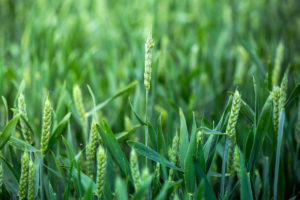Product Focus – Ethephon-based Cereal PGRs
Posted on 27 April 2021
With flexible application use, Clayton PGRs target shortening and strengthening of upper internodes to prevent stem lodging, late lodging protection of yield & quality, and reduced brackling in barley to improve harvest efficiency.
Product Profiles – Plant Growth Regulators
TEPHON®
SC formulation containing 480g ethephon.
Pack size: 5 Litres
Crops: Winter & Spring Barley, Winter Wheat, Winter Rye, Winter Triticale
Max. individual & total dose WW: 0.75 l/ha
WB / WT / WR: 1.0 l/ha
SB: 0.5 l/ha Latest application timing WW, WT: GS47 (before flag leaf opening),
WB, SB, WR: GS49 (before 1st spikelet of inflorescence just visible)
Water volume (l/ha): 200-400
Rates and timing
Winter Barley
High Lodging Risk Crops: For the greatest resistance to lodging use a sequential treatment of an approved formulation containing chlormequat followed by Tephon at 0.75 L/ha from the ‘flag leaf just visible’ stage of crop growth (GS37) up to and including the ‘first awns just visible’ stage (GS49). The optimum time for Tephon application is at GS37.
Low Lodging Risk Crops: Where lodging is not expected to be a severe problem, the crop may be treated with a sequential programme of an approved formulation containing chlormequat followed by a reduced rate of Tephon at 0.5 L/ha from GS37 up to and including ‘first awns just visible’ stage (GS49).
Winter Wheat
For best control use a sequential programme of an approved chlormequat product followed by Tephon at 0.5 L/ha from ‘flag leaf just visible’ stage of crop growth (GS37) up to and including ‘boots swollen’ stage (GS45). Where the crop has not received prior chlormequat treatment apply Tephon at 0.75 L/ha from GS37 up to and including GS45.
CLAYTON PROUD®
SC formulation containing 305g mepiquat chloride + 155g ethephon
Pack size: 5 Litres
Crops: Winter wheat, Winter and Spring Barley, Triticale and Winter Rye
Max. individual & total dose:
Winter wheat, winter barley, triticale
2.0 l/ha (before GS39) 1.5 l/ha (before GS51) Winter rye 2.0 l/ha (before GS39)
Spring barley 1.5 l/ha (before GS39)
1.0 l/ha (before GS51)
Latest application timing: See label
Water volume (l/ha): Minimum of 220
Rates and timing:
Other specific restrictions: maximum total dose must not exceed 2.0 litres product per hectare when applying split dose applications to winter wheat and winter barley.
Winter Barley and Winter Wheat
Clayton Proud may be applied either as a Single or Split Dose treatment.
The preferred treatment is to apply using the split dose. The first dose should be applied from the ‘second node detectable’ stage (GS32) up to and including ‘flag leaf just visible’ stage (GS37). Where an approved chlormequat-based PGR has been applied previously to the crop, the preferred application will be towards the latter end of this timing.
The second dose should be applied after GS37 up to and including ‘first awns visible’ stage in WB (GS 49), or ‘boots swollen’ stage in WW (GS45).
PGR products from Clayton benefit from flexible labels allowing application of both single or split doses for certain crops to manage lodging risk accordingly. See labels for further information.
